
REGULAR ARTICLE
Visual Simultaneous Localization and Mapping (VSLAM)
methods applied to indoor 3D topographical and radiological
mapping in real-time
Felix Hautot
1,3,*
, Philippe Dubart
2
, Charles-Olivier Bacri
3
, Benjamin Chagneau
2
, and Roger Abou-Khalil
4
1
AREVA D&S, Technical Department, 1 route de la Noue, 91196 Gif-sur-Yvette, France
2
AREVA D&S, Technical Department, Marcoule, France
3
CSNSM (IN2P3/CNRS), Bat 104 et 108, 91405 Orsay, France
4
AREVA Corporate, Innovation Department, 1 place Jean Millier, 92084 Paris La Défense, France
Received: 26 September 2016 / Received in final form: 20 March 2017 / Accepted: 30 March 2017
Abstract. New developments in the field of robotics and computer vision enable to merge sensors to allow fast
real-time localization of radiological measurements in the space/volume with near real-time radioactive sources
identification and characterization. These capabilities lead nuclear investigations to a more efficient way for
operators’dosimetry evaluation, intervention scenarios and risks mitigation and simulations, such as accidents
in unknown potentially contaminated areas or during dismantling operations. In this communication, we will
present our current developments of an instrument that combines these methods and parameters for specific
applications in the field of nuclear investigations.
1 Introduction
Nuclear back-end activities such as decontamination and
dismantling lead stakeholders to develop new methods in
order to decrease operators’dose rate integration and
increase the efficiency of waste management. One of the
current fields of investigations concerns exploration of
potentially contaminated premises. These explorations are
preliminary to any kind of operation; they must be precise,
exhaustive and reliable, especially concerning radioactivity
localization in volume.
Furthermore, after Fukushima nuclear accident, and
due to lack of efficient indoor investigations solutions,
operators were led to find new methods of investigations in
order to evaluate the dispersion of radionuclides in
destroyed zones, especially for outdoor areas, using Global
Positioning Systems (GPS) and Geographical Information
Systems (GIS), as described in [1]. In both cases, i.e.
nuclear dismantling and accidents situations, the first aim
is to explore unknown potentially contaminated areas and
premises so as to locate radioactive sources. Previous
methods needed GIS and GPS or placement of markers
inside the building before localization of measurements,
but plans and maps are often outdated or unavailable.
Since the end of 2000s, new emergent technologies in the
field of video games and robotics enabled to consider fast
computations due to new embedded GPU and CPU
architectures. Since the Microsoft Kinect
®
has been released
in 2010, a lot of developers “hacked”the 3D camera system
in order to use 3D video streams in many fields of use such as
robotics, motion capture or 3D imaging processing algo-
rithms development. During the few following years, light
and low power consuming 3D cameras enabled to consider
new 3D reconstruction of environment methods such as
Simultaneous Localization and Mapping (SLAM) based on
visualodometryandRGB-Dcameras[2,3].Otherapproaches
of SLAM problem solutions can also be performed using TOF
cameras, or 3D moving laser scanners [4]. However, and
considering indoor nuclear environments constraints, RGB-
D camera based on systems was the most adapted one for
resolving such kind of problem in a first approach.
This paper will present new progresses in merging
RGB-D camera based on SLAM systems and nuclear mea-
surement in motion methods in order to detect, locate, and
evaluate the activity of radioactive sources in 3D. This field
of nuclear activities lacks solutions, especially when plans
are outdated and radioactive sources locations are unknown.
These new methods enabled to reconstruct indoor areas
and eventually outdoor areas in real-time and 3D and also
reconstruct 3D radioactive sources in volume. The sensor
fusion method we developed can be considered as a proof of
concept in order to evaluate the feasibility of performing
* e-mail: hautot@csnsm.in2p3.fr
EPJ Nuclear Sci. Technol. 3, 15 (2017)
©F. Hautot et al., published by EDP Sciences, 2017
DOI: 10.1051/epjn/2017010
Nuclear
Sciences
& Technologies
Available online at:
http://www.epj-n.org
This is an Open Access article distributed under the terms of the Creative Commons Attribution License (http://creativecommons.org/licenses/by/4.0),
which permits unrestricted use, distribution, and reproduction in any medium, provided the original work is properly cited.

nuclear measurement and radioactive sources localization
algorithms in parallel. Furthermore, the benchmark that
we will present as a conclusion of this communication
enables to consider the reliability of radioactive source
localization methods inputs.
In 2013, AREVA D&S started an R&D program for
developing new investigation techniques based on autono-
mous sensing robotics and localization apparatus in order
to provide new efficient exploration and characterization
methods of contaminated premises and areas. This work
corresponds to MANUELA
®
system developments by
Areva D&S. Part of this work is protected by a patent
(number WO2015024694) [3].
2 Materials and methods
2.1 General method
The presented method is based on two completely different
techniques. The first one, which is called SLAM, is well
known in the field of robotics, and it constitutes a specific
branch of computer perception R&D. The second one, as
described in [5,6], concerns radioactive sources localization
and activity quantification from in-situ measurements and
data acquisitions. The usual method for these acquisitions
is time consuming for operators and, in consequence,
integrated dose of workers during these investigations
could be decreased.
Chen et al. [7] described such a mapping system based on
merging RGBD-camera with radioactive sensors. The
presented system automatically detects radioactive sources
by estimating their intensities during acquisition with a
deported computer using Newton’s inverse square law
(NISL). However, the NISL does not enable to estimate
volumetric sources intensities; indeed, this calculation
technique is limited to punctual radioactive sources relative
intensity calculations.
Our aim was to build a complete autonomous system
for being totally independent of any external features,
and dependencies including GPS. Our set of constraints
led us to implement the whole system in one single and
autonomous apparatus. Our radioactive source localization
processing is performed in two distinguished steps. First,
we will research a probability of presence (geostatistics and
accumulative signal back projection will help this inter-
pretation) of radioactive source in order to estimate the
source location and determine if it is volumetric or
punctual. Second, after verification of the relevance of
the acquisition, thanks to real-time uncertainties estima-
tion, the operator will define source terms properties
according to the acquisition (radionuclide signature and
relative position of the sources and the device) and site
documentation (radioactive source, chemical composition)
in order to perform gamma transport inverse calculations.
This way of computation principle leads to compute real
volumetric radioactive sources activities and confidence
intervals of the effective radioactive sources intensities.
A great problem for an autonomous apparatus (such as
robot) is to locate itself in unknown environments, in order
to compute appropriate motions and trajectories in
volume. A simple formulation of this problem is that the
apparatus must know its position in a map in order to
estimate its trajectory. Using sensors, the system will build
a map and compute its next position (translation and
orientation in volume) at each acquisition step.
In order to compute SLAM inherent calculation in
autonomous and light device development context,
hardware specifications investigations are particularly
important, due to required software performances.
2.2 Hardware
The presented radiological mapping system is embedded
and designed for real-time investigations inside contami-
nated areas or premises. The whole system is enclosed and
autonomous and needs no external marker or network for
being active. However, the operator’s real-time interven-
tion requires real-time reconstruction and visualization,
which is very performance-consuming.
2.2.1 Sensors
The system software input uses different sensors:
–3D camera based on active stereoscopy. As shown in
Figure 1, this camera’s output consists of two different
kinds of frame, a normal colour pixels image, and a depth
map. The depth map is based on active stereoscopy
technique and provides each colour pixel distance to sensor.
–Nuclear measurements sensors including a dose rate
meter and a micro CZT spectrometer (Fig. 2).
2.2.2 Computing unit
The 3D reconstruction and nuclear measurements are
performed fully embedded, in real-time, due to operator
interactions and acquisition time optimization in contami-
nated environment. Furthermore, the computing hardware
must be fanless in order to avoid nuclear contamination.
To satisfy these constraints, the embedded CPU must be
enough powerful for supporting parallel processing.
2.3 Simultaneous Localization and Mapping
SLAM concept (Simultaneous Localization and Mapping)
can be performed by merging different kinds of sensors;
such as Inertial Measurement Units (IMU), accelerometers,
Fig. 1. Outcoming data from 3D sensor (left: depth-map, right:
RGB image).
2 F. Hautot et al.: EPJ Nuclear Sci. Technol. 3, 15 (2017)

sonars, lidars, and cameras. In our method, only 3D cameras
are used. Using IMUs in order to improve our system
accuracy is on of the main perspectives of our current
developments. We propose to merge two different kinds of
algorithms so as to reconstruct the environment in 3D,
compute the trajectory with 6 degrees of freedom (transla-
tion, pitch, roll, and yaw) in volume, and merge measure-
ments with the device’sposes.
Two problems appear during that kind of acquisition.
First, slight error during the odometry computation causes
a non-regular drift of the trajectory. The second problem
concerns the memory management of acquisitions in
realtime. Indeed, 3D video gross data can quickly cost a
considerable amount of active memory during the acquisi-
tion. Then, implementing a circular buffer is necessary for
increasing the scanning volume up to hundreds of cube
meters.
In order to develop our measurement method, we
modified the RtabMap software [8–10] provided by IntroLab
(Sherbrooke). By this way, we are able touse visual odometry
with 3D cameras in order to reconstruct the environment and
compute the device trajectory at 25 Hz.
Pose-graph visual SLAM is based on the principle that
each acquisition step is a combination of constraints links
between observations. These constraints are established
using features detection and extractions of each processed
image. This kind of SLAM problem is represented with
graphs of constraints. Each observation of the robot creates
node, new links and constraints. This method allows fast
node recognition including loop and closure based on
optimization methods.
2.3.1 Visual odometry
The goal of visual odometry is to detect the relative motion
between two poses of the camera, and then to back-project
the 3D and RGB streams in a computing reconstruction
volume. This problem can be expressed as equation (1).
This equation describes the transformation of each pixel of
the camera to a 3D point, depending on intrinsic and
extrinsic camera parameters:
z
u
v
1
0
B
@
1
C
A
pixel
¼
fx0cx
0fycy
001
0
B
@
1
C
A
Camera intrinsic
parameters
R1;1R1;2R1;3T1
R2;1R2;2R2;3T2
R3;1R3;2R3;3T3
0
B
@
1
C
A
Camera extrinsic
parameters
x
y
z
1
0
B
B
@
1
C
C
A
3D
point
:
ð1Þ
z: depth at pixel (u,v); u,v: coordinates of the considered
pixel; f
x
: focal length along x;f
y
: focal length along y;c
x
,c
y
:
lens centering on the optical axis; R
a,b
: element of the
rotation matrix; T
a
: element of the translation vector; x,y,
z: projected point coordinates in volume.
Visual odometry is processed on a real-time RGB-D
data stream in order to detect the motions of the device in
volume and get the colour for reconstruction. Simulta-
neously, the corresponding depth stream is used for
calculating the rotation/translation matrix between two
successive frames.
Visual odometry is features extraction based on. Each
RGB image is processed in order to extract interest points.
These interest points are formed by image corners. The
corresponding pixel in the depth map is also extracted.
Depending on the pine-hole model, features are then
back-projected in volume.
As described in Figure 3, unique correspondences are
researched between two sets of consecutive images. If
enough unique correspondences are detected, then odom-
etry is processed. A RANdom SAmple Consensus (RAN-
SAC) algorithm calculates the best spatial transformation
between input images (rotation and translation).
2.3.2 Loop and closure
Errors during the pose matrix computation cause a non-
regular drift of the trajectory. Graph-SLAM and con-
strained optimization methods based on loop-and-closure
correct this drift when a previously scanned zone is reached
by adding constraints to previous acquired constraint
graph as described in Figure 4 [8].
2.4 Nuclear measurement management and location
Measurements in motion-related work [11] by Panza
describe a system used within motions in two dimensions
with collimated measurements probes. In this case, using
leads collimator could be possible, but our case concerns a
handheld system measuring in a near 4pi sphere, and
moving with six degrees or freedom.
All the data (nuclear measurement and positioning, 3D
geographical and trajectory reconstruction) are performed
in real-time while the device can have different kinds of
status: moving or motionless. All the nuclear measure-
ments are considered isotropic.
Each set of measurement (integrated or not) is attached
to the Graph-SLAM geographical constraints structure.
This allows performing trajectory optimizations and
measurement positioning optimization simultaneously.
Fig. 2. Outcoming data from nuclear measurements sensors.
F. Hautot et al.: EPJ Nuclear Sci. Technol. 3, 15 (2017) 3

In order to satisfy the “real-time”constraint, a user
interface displays every current measurement and process
step in real-time in order to provide all pertinent and
essential information to the operator (Fig. 5).
2.4.1 Continuous measurement
Dose rate measurements are processed during the 3D
reconstruction with a lower frequency (around 2 Hz) than
video processing (around 20–25 Hz). In order to manage the
nuclear measurement positioning, we had to find a
compromise between positioning uncertainty, which
depends on the counting time and counting uncertainty
that depends on the inverse counting time. So, first and
foremost, dose rate measurement is positioned at half path
distance during integration (Fig. 6).
Assigning radioactive measurements to a specific
timeframe will cause a negligible error. The time
measurement error in parallel processing is around a few
milliseconds, and the minimal integration time for dose
rate measurements is around 500 ms. The predominant
measurement positioning uncertainty will be caused by the
motion of the instrument during the integration of
measurements and the linear poses interpolation method
that is presented in Figure 6.
Gamma spectrometry measurements are processed
with an even lower frequency (around 0.3 Hz) than the
dose rate measurements (around 2 Hz). Consequently, the
uncertainty on spectrum positioning is more important,
compared to dose rate positioning. To compensate this
error, dose rate values will help to distribute weighted
spectrums for the acquired one (Fig. 7).
Considering the whole integration path, using high
frequency IMU will help (in future developments) to locate
measurements points more accurately during the capture
by considering intermediate motions between the graph
nodes.
Fig. 4. Loop and closure optimization.
Fig. 3. Visual odometry processing.
Fig. 5. Acquisition interface.
Fig. 6. Nuclear measurements positioning.
4 F. Hautot et al.: EPJ Nuclear Sci. Technol. 3, 15 (2017)

2.4.2 Integrating measurement
In some case, very precise measurements are required to
build a representative map of the environment. The fast
pose calculation method we use allows considering the
device as a 3D accelerometer with a higher frequency than
nuclear measurements. While the 3D video stream is being
acquired, the acceleration of the device is estimated and if
the device is motionless, measurements can be integrated
at the current pose (Fig. 8).
The main problem of this integration method is the lack
of path looping consideration. Indeed, if the instrument
trajectory crosses a previous location, this integration
method is not sufficient to treat new measurements points
at the previously considered integration zone. In order to
manage new measurements and to improve measurements
integration, efficient research of neighbour measurement
points can be performed thanks to nearest neighbour
research algorithms (e.g. kd-tree, etc.). Anyway, the
gamma emitter decay half-life must be long enough to
consider its radioactive activity unchanged during the
measurement process. In order to correct this eventual
decrease of nuclear activity, elapsed time between the
beginning and the end of the measurement sampling
process enables to estimate specific correction factors for
each detected gamma emitter with the spectrometry
measurements probe. This last principle could be explored
as an important perspective of nuclear measurements real-
time processing developments.
2.5 Near real-time post-processing, sources
localization
At the end of acquisition, radioactive source localization
computation methods are available with a set of algorithms
that provide interpolations and back-projections of mea-
sured radioactive data in volume. The algorithms are
optimized for providing results in a few seconds, even if
uncertainties could be reduced by more accurate methods.
2.5.1 Measurements 3D interpolation
For interpolating measurements in 3D, we use a simple
deterministic Inverse Distance Weighting (IDW) method,
which is accurate enough considering the usual radiopro-
tection operating accuracy. Furthermore, this fast com-
puted method allows operators to consider the operating
room state of contamination very quickly with this
embedded method. The used IDW method is described
within equations (2) and (3):
vðxÞ¼Xn
i¼0wiðxÞvi
Xn
i¼0wiðxÞ;ð2Þ
with:
wiðxÞ¼ 1
Dx;xi
p;ð3Þ
v(x): interpolated value at x;w
i
: weight of the measure-
ment point i;Dx;xi
p: distance between current interpolat-
ed point and measurement point i;n: number of measured
points.
2.5.2 Dose rate back-projection
Back projection method is also deterministic and uses the
3D reconstruction to compute radiation emission zones
in volume. This method is described within equations (4)
and (5):
BðxÞ¼Pn
i¼0
emaDX;x
DX;x2
nwðxÞ;ð4Þ
wðxÞ¼fðvarðBðxÞÞ;ð5Þ
n: number of nuclear measurement point; B(x): back
projection value (mGy h
1
); x: location (x
1
,y
1
,z
1
) of back-
projected value; X: location (x
2
,y
2
,z
2
) of nuclear measure-
ment point; m
a
: linear attenuation coefficient of air (cm
2
);
w(x): weight associated to xlocation; D
X,x
: distance
between Xand xlocation.
The back-projection algorithm inputs are:
–3D reconstruction decimated point cloud;
–nuclear measurements and position data.
Each point of the 3D point cloud (xin Eq. (4))is
considered as a possible radioactive source; then, emerging
mean fluency or dose rate at the 3D reconstruction point
(B(x)inEq.(4)) is computed for every measured point (Xin
Eq. (4)).Further,variancedistributionof the back-projected
value enables to evaluate the possibility of radioactive
source presence in volume at the back-projected point.
Fig. 7. Spectrum positioning management.
Fig. 8. Radioactive measurements positioning.
F. Hautot et al.: EPJ Nuclear Sci. Technol. 3, 15 (2017) 5


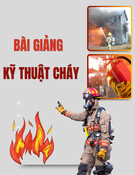
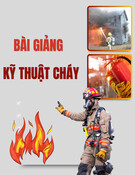
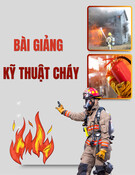
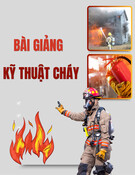

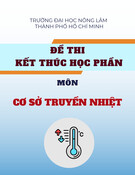

![Ngân hàng trắc nghiệm Kỹ thuật lạnh ứng dụng: Đề cương [chuẩn nhất]](https://cdn.tailieu.vn/images/document/thumbnail/2025/20251007/kimphuong1001/135x160/25391759827353.jpg)






